Update

Upgrading Our Engine | Update 31.2
Aug 18th
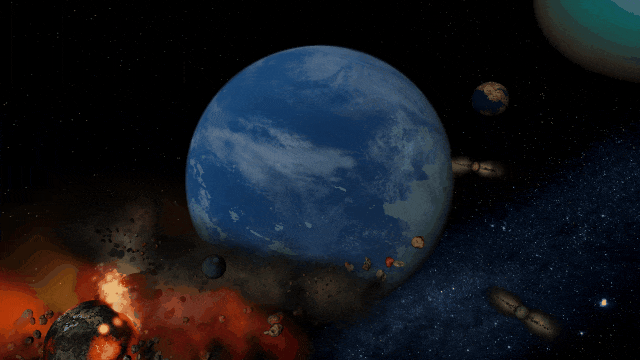
If Update 31.2 does not download automatically, follow these update instructions, or buy Universe Sandbox via our website.
Update 31.2
Unity Engine Upgrade
We’ve updated Unity, the game engine we use to create Universe Sandbox. While you won’t see immediate changes, this will allow us to utilize new features for future improvements to our physics simulation.
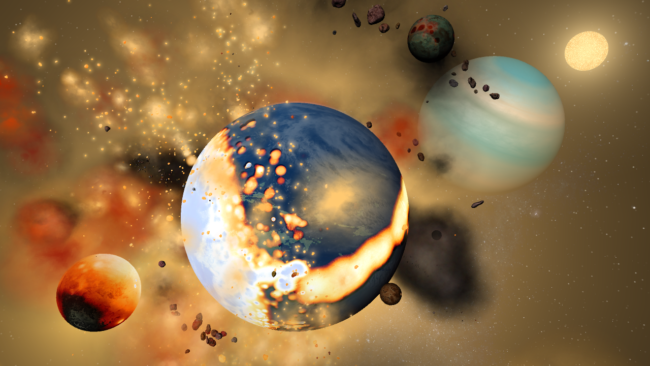
Instant Water Flow
Use the Settle Water button to immediately stabilize the water level of a planet.
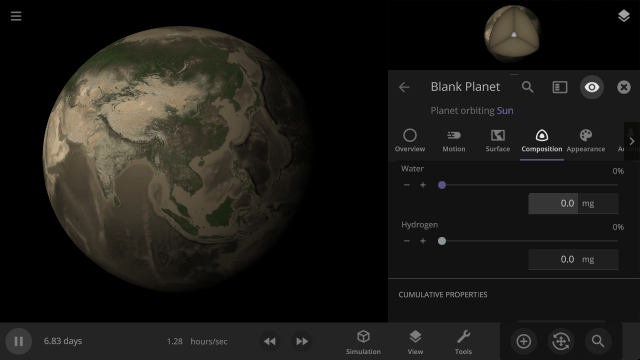
More Highlights
Control the lowest temperature of space with the Background Temperature. By default, this is 2.73 Kelvin to approximate the Cosmic Microwave Background. Adjust it under
Simulation > Advanced Simulation Settings > Temperature > Background Temperature
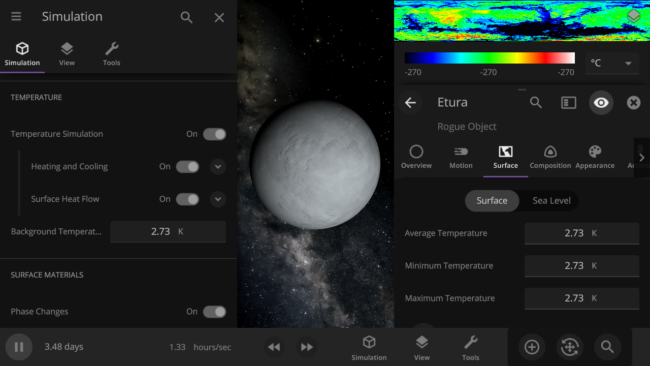
Random object icons in the Add tool have been updated
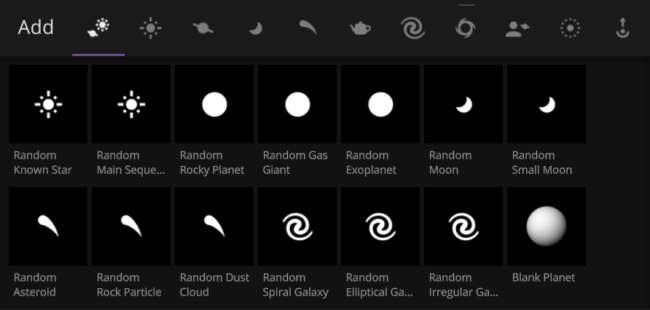

Learn about habitable zones and how Universe Sandbox models them in our guide
Guides > Science > Habitable Zones
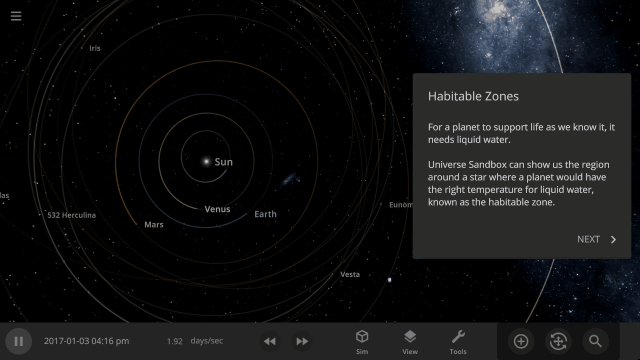
Stellar collisions now partially merge and transfer mass before going supernova
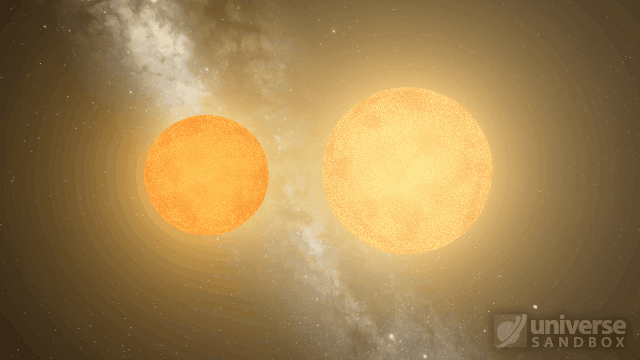
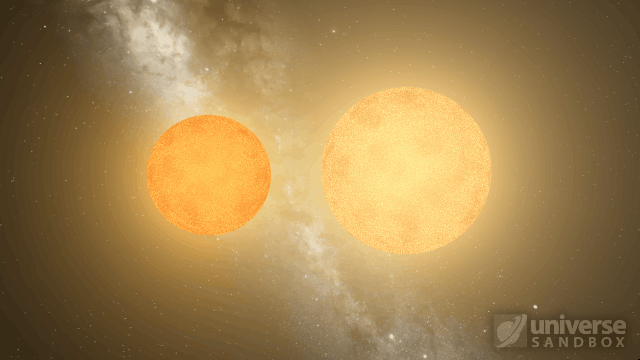
Collision shockwaves are now realistically circular
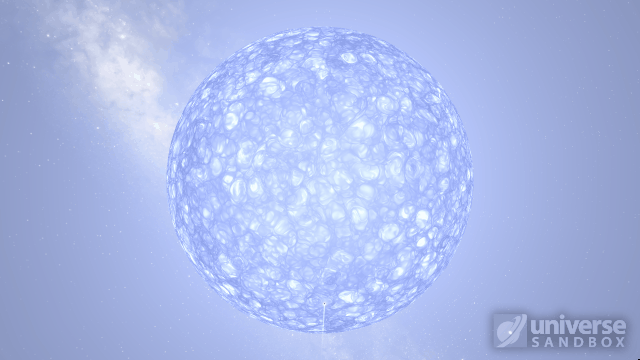
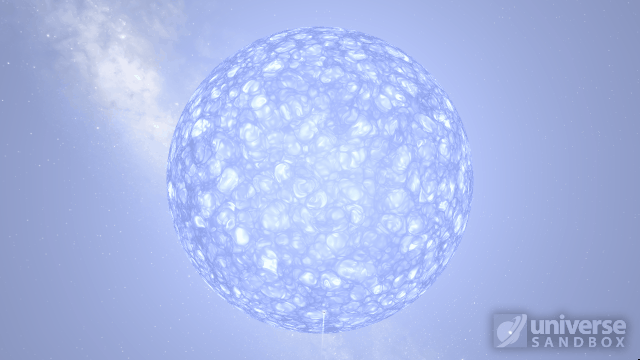
Particles now collide more consistently, and gas cloud momentum is now transferred to and from impacting objects


This update includes 3+ additions and 27+ fixes and improvements.
Check out the full list of What’s New in Update 31.2
Please report any issues on our Steam forum, on Discord, or in-game via Home > Send Feedback.

A Warmer Welcome | Update 31.1
Jun 23rd
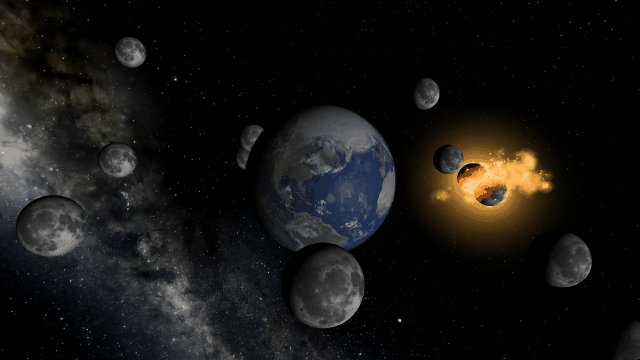
If Update 31.1 does not download automatically, follow these update instructions, or buy Universe Sandbox via our website.
Update 31.1
Welcome to Universe Sandbox
Discover your infinite power to create and destroy! Our all-new welcome guide now better highlights the awesome potential of Universe Sandbox. Check them out
Home > Guides > Welcome to Universe Sandbox
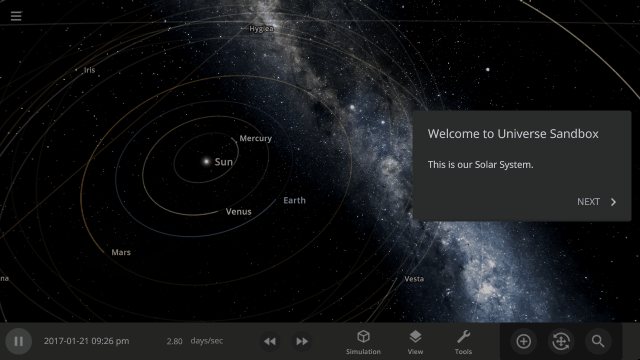
More Highlights
- Blank planets now have the densities of rocky planets instead of gas giants
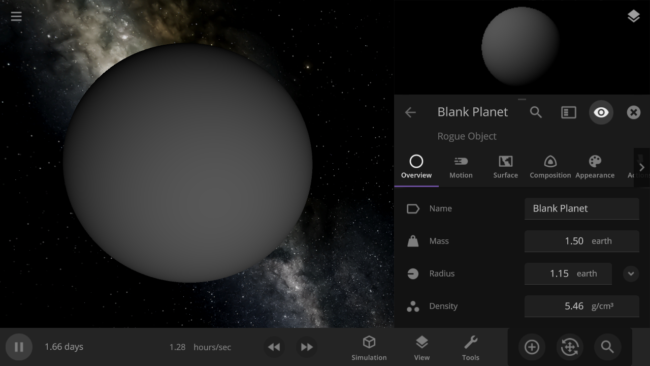
- The habitable zone no longer intersects planets, giving you a clearer view of the surface
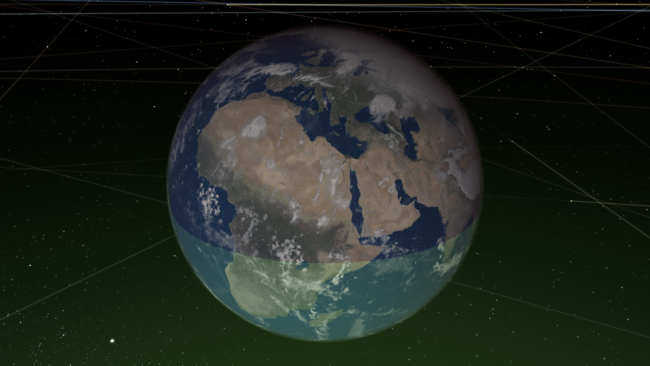
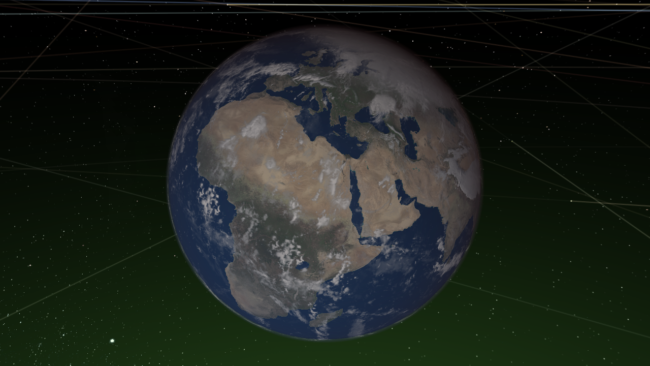
This update includes 1+ additions and 18+ fixes and improvements.
Check out the full list of What’s New in Update 31.1
Please report any issues on our Steam forum, on Discord, or in-game via Home > Send Feedback.

Constellations | Update 31
Jun 9th
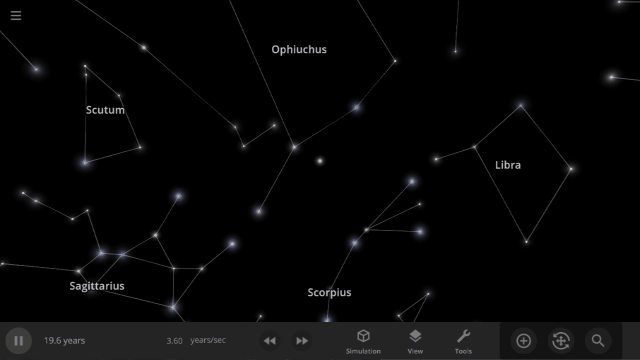
If Update 31 does not download automatically, follow these update instructions, or buy Universe Sandbox via our website.
Update 31
Explore constellations from different cultures and watch as they change over thousands of years as stars move across the sky. Stars also look more realistic and planet and star glows depend on the same physical properties.
Constellations
We’ve added constellations! There are currently constellation sets for 10 cultures. Find them under: Home > Open > Constellations
Learn more about constellations in our new guides: Home > Guides > Constellations
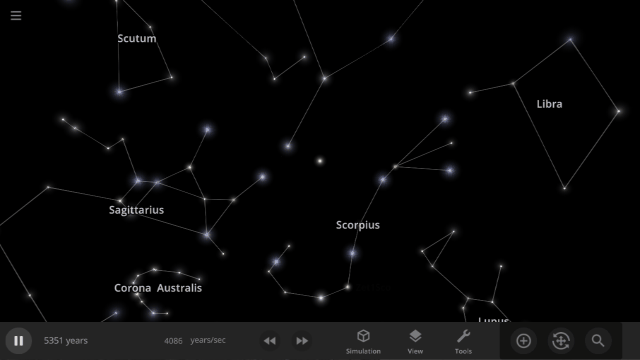
Realistic Stellar Edges
Stars now show limb darkening, an observed phenomenon where the edges appear dimmer than the center.
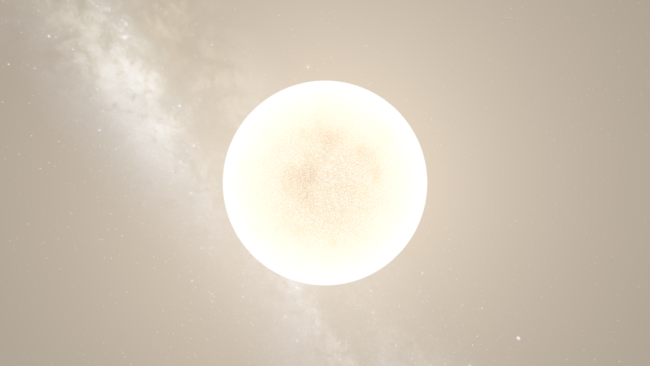
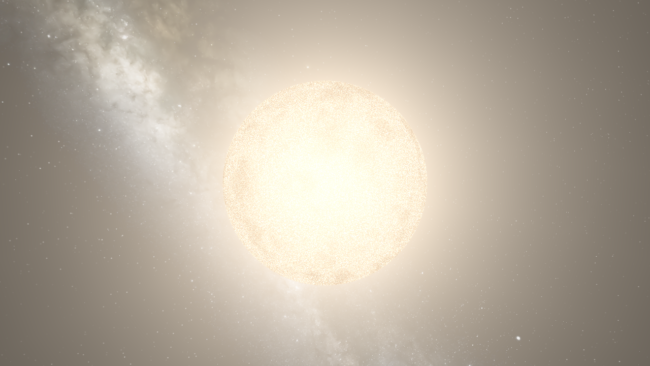
Dynamic Object Glows
The size of an object’s glow now corresponds to how bright the object is, in addition to its temperature and how far away it is, with brighter objects getting larger glows.
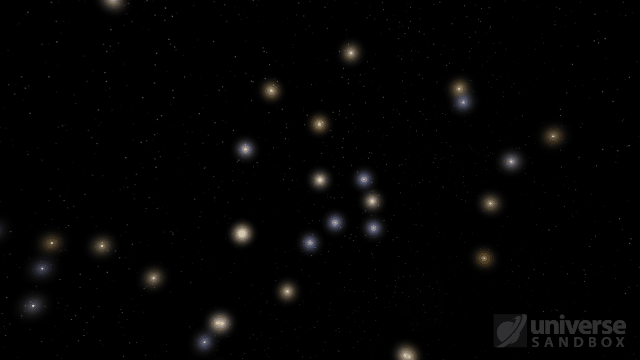
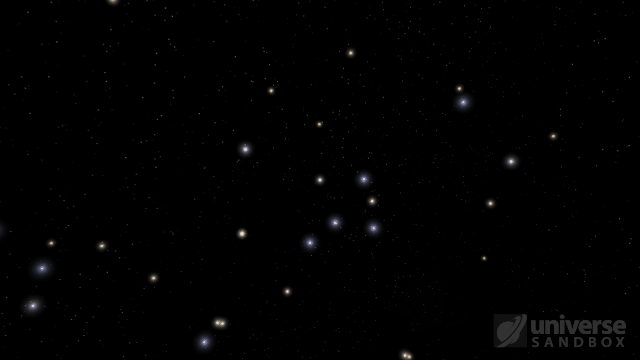
More Highlights
- Glows from stars and planets of the same radius and temperature are now the same size
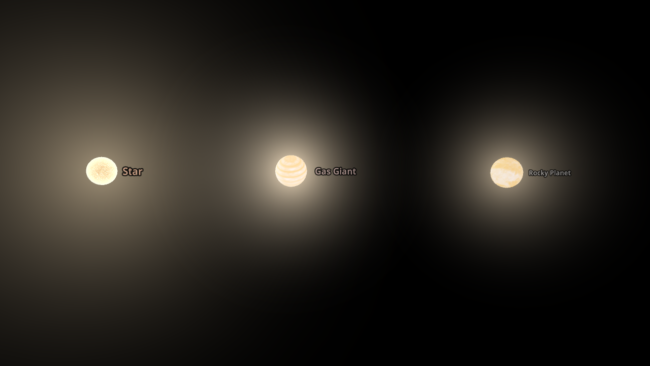
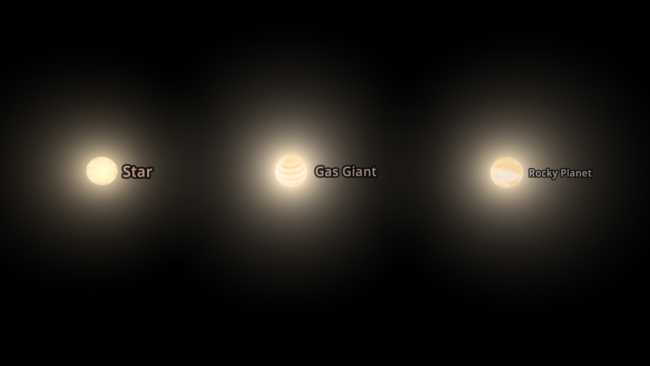
- Random Rock Particles and Dust Clouds can now be added directly from the Add panel
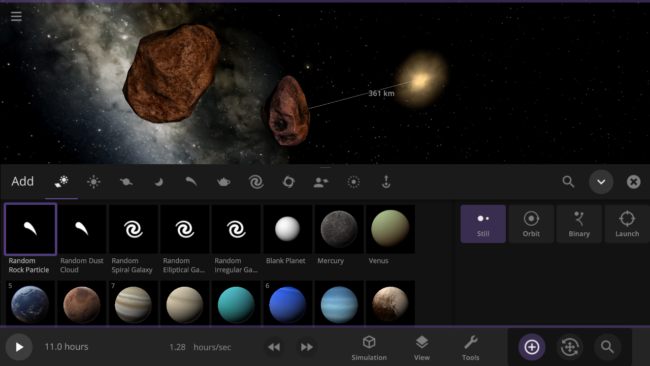
- The dynamic habitable zone now displays a notification indicating the object it is showing the habitable zone for
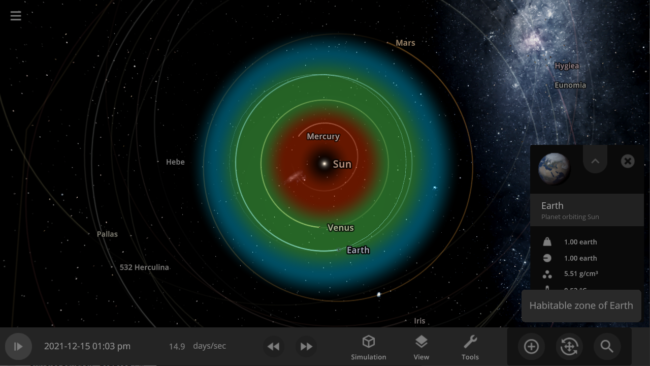
- Many user interface improvements: added two-column menus, fading scrollbars, and unit changes persisting in an object’s properties panel
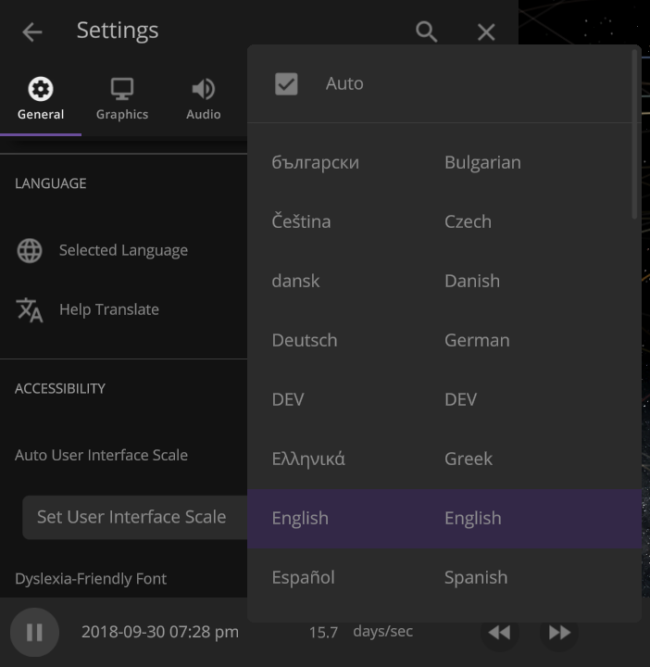
- The Gravity button now only turns the gravity between objects on or off. You can turn the gravity holding objects together on or off in the Advanced Simulation setting.
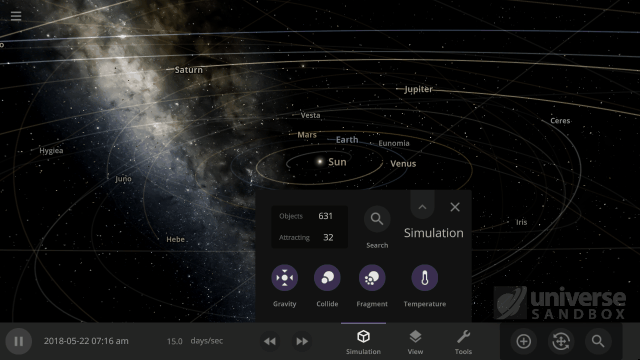
- The Guide panel has been reorganized. Check it out under: Home > Guides
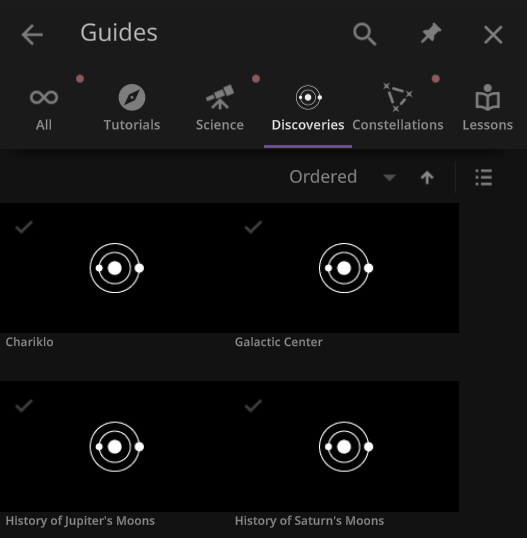
This update includes 4+ additions and 25+ fixes and improvements.
Check out the full list of What’s New in Update 31
Please report any issues on our Steam forum, on Discord, or in-game via Home > Send Feedback.

Hit Hard, Spin Fast | Update 30
Apr 14th
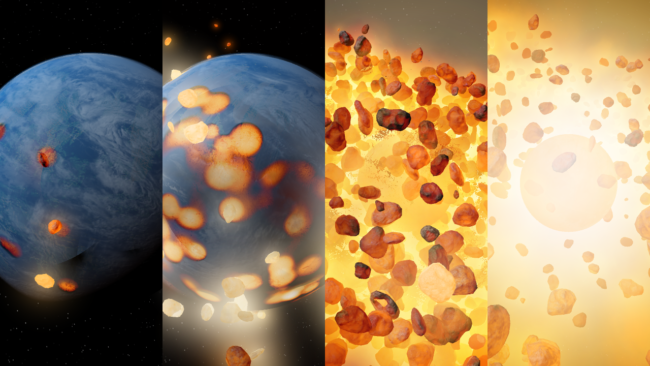
Run Steam to download Update 30, or buy Universe Sandbox via our website or the Steam Store.
Update 30
Spin apart planets with the Force Spin tool and discover the destructive potential of the newly simulated centrifugal force. We’ve also improved same-sized object collisions so you can launch the Earth at itself and watch the shockwaves heat and fragment both planets on impact.
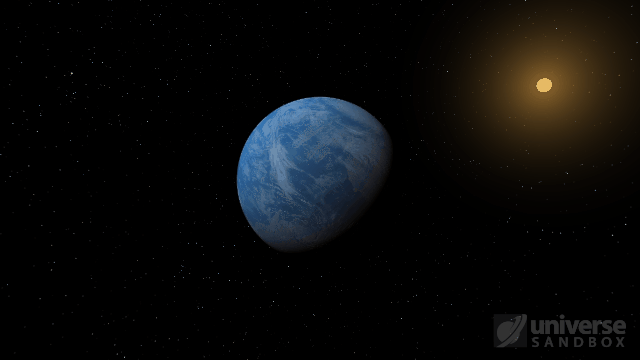
Centrifugal Force
Planets will fragment at very high rotational speeds as the centrifugal force overwhelms the gravity holding them together. Learn more: Home > Guides > Centrifugal Destruction
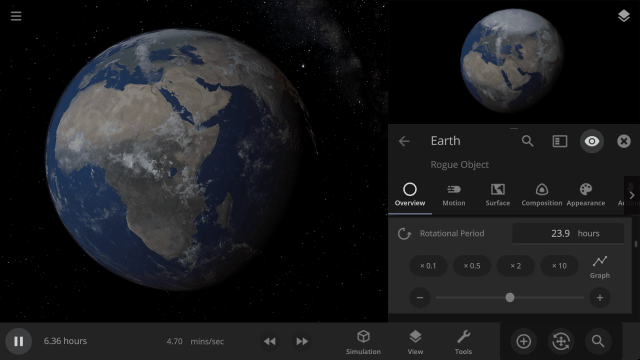
Same-Size Object Collision Improvements
Colliding two objects of similar size now causes heating and fragmentation on both objects. See the destruction yourself: Home > Open > Earth & Earth Collision
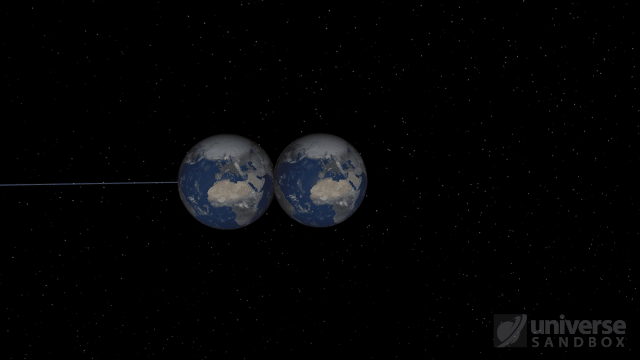
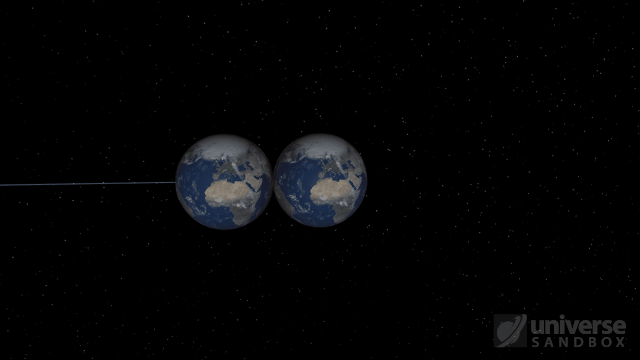
Move Oceans
Centrifugal force now pushes water on fast-spinning objects toward the object’s equator.
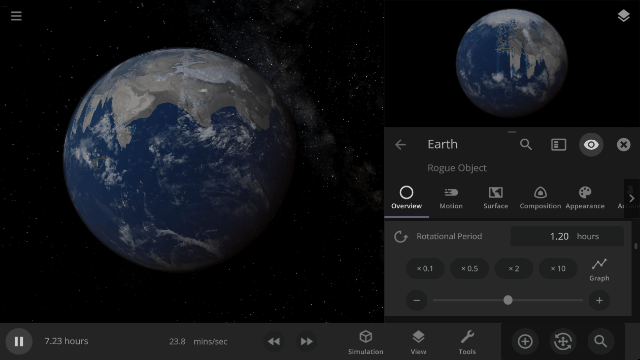
Force Spin Tool
Change an object’s rotational speed, poles, and equator with the new Force Spin tool. Check it out in: Tools > Force > Spin
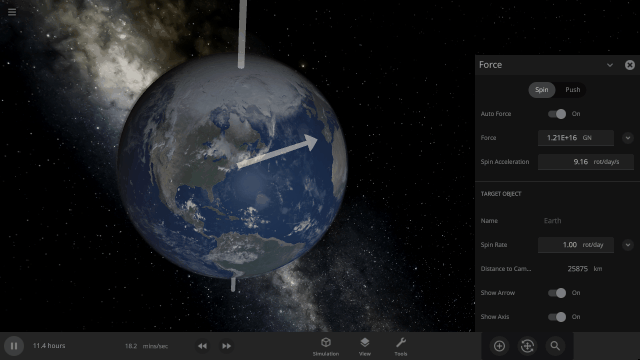
More Highlights
- Rotation and speed of objects after collisions are now more accurately conserved, decreasing when mass is gained and increasing when mass is lost
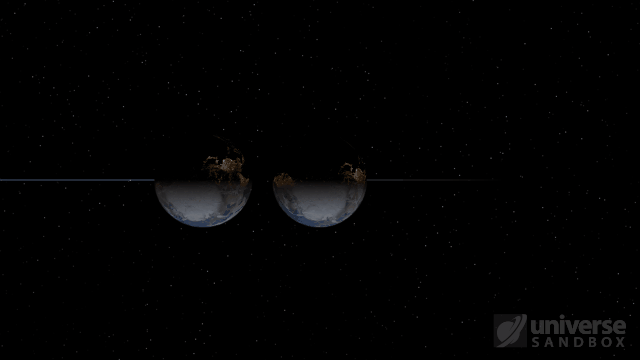
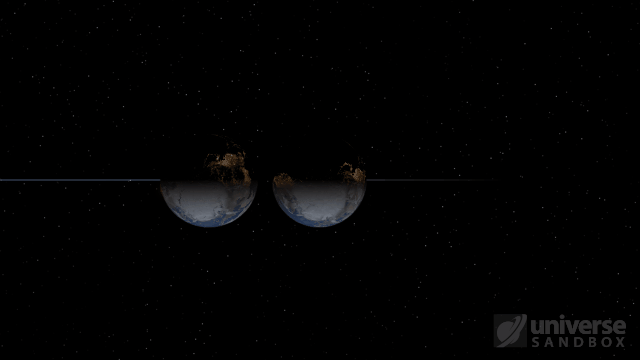
- The habitable zone changes to use the properties of the object you have selected to show its optimal habitable distance
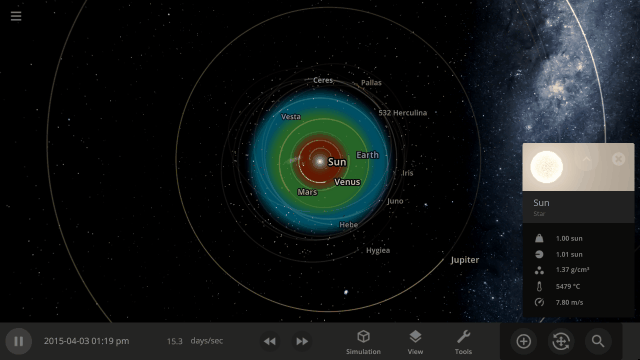
- You can now change the Number of Atmosphere Layers an object has and create Venus-like planets
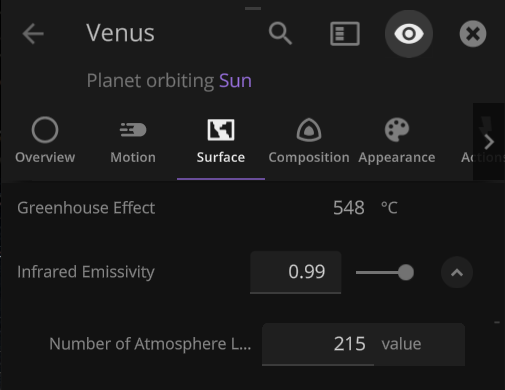
- The Hubble Space Telescope has been added to Universe Sandbox
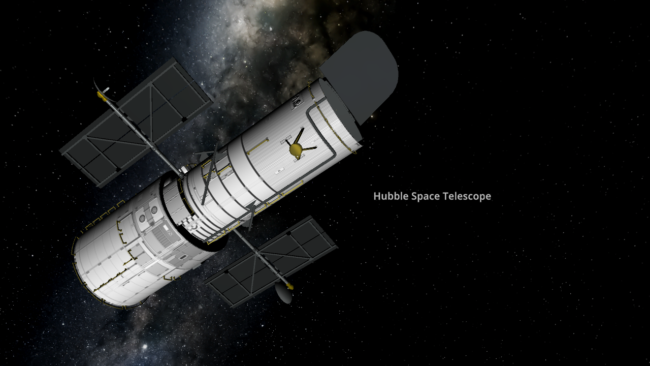
- We’ve corrected the orientations of the James Webb Space Telescope (now facing away from the Sun) and Parker Solar Probe (now facing toward the Sun)
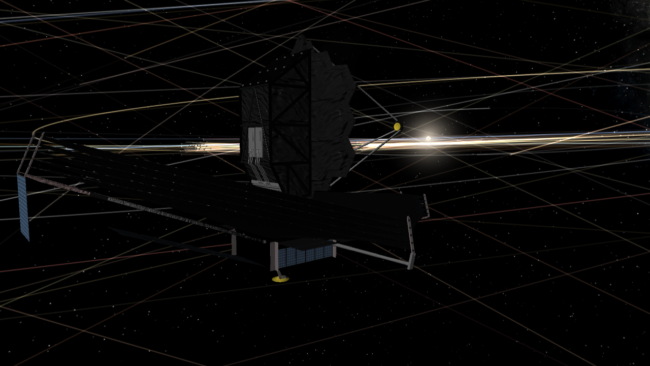
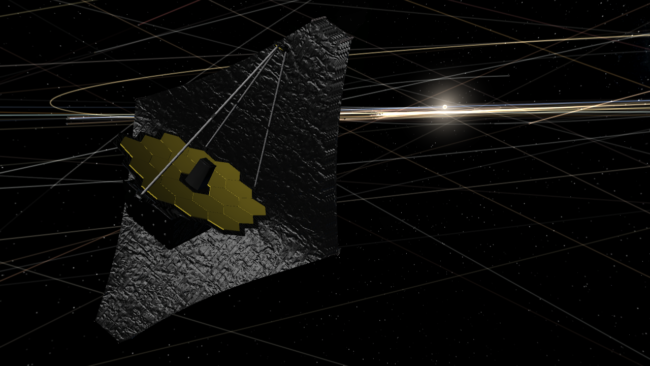
This update includes 12+ additions and 43+ fixes and improvements.
Check out the full list of What’s New in Update 30
Please report any issues on our Steam forum, on Discord, or in-game via Home > Send Feedback.

Consistent Collisions, James Webb, & Planetscaping Tweaks | Update 29.1
Jan 27th

Run Steam to download Update 29.1, or buy Universe Sandbox via our website or the Steam Store.
Update 29.1
Planetscaping now has an eyedropper tool to sample the surface of an object to make creating (or flooding) land even smoother. We’ve also improved fragmentation during collisions, among other things.
Fragmentation
We’ve updated how we determine the number of fragments during collisions. This allows fragments to last longer in simulations with numerous collisions and makes collisions more consistent across different simulation speeds.
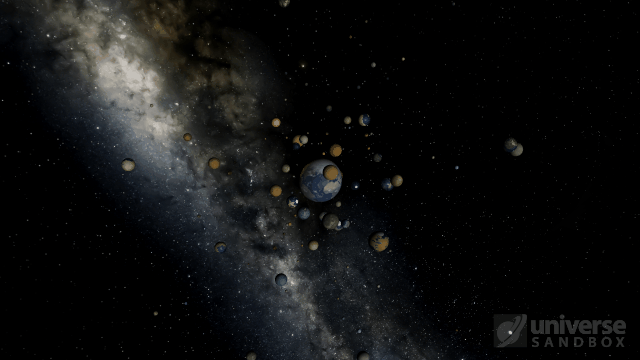
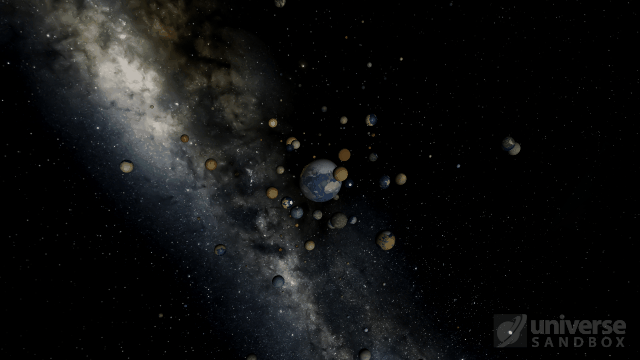
Planetscaping Eyedropper
There’s now an eyedropper in the Planetscaping tool so you can easily sample and set the Depth, Temperature, and Pressure to match those of the object you are Planetscaping.
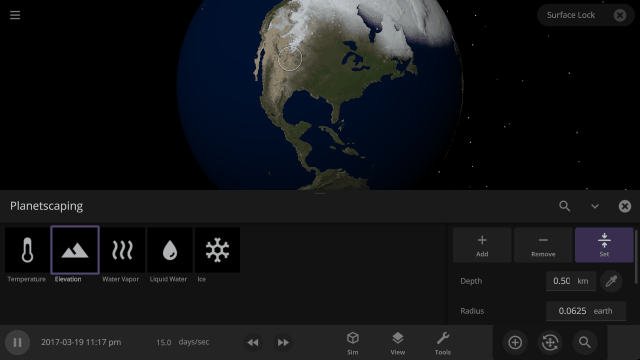
More Highlights
- Surface Lock is now a manual toggle, but turns on automatically when you are using the Planetscaping or Laser Tools
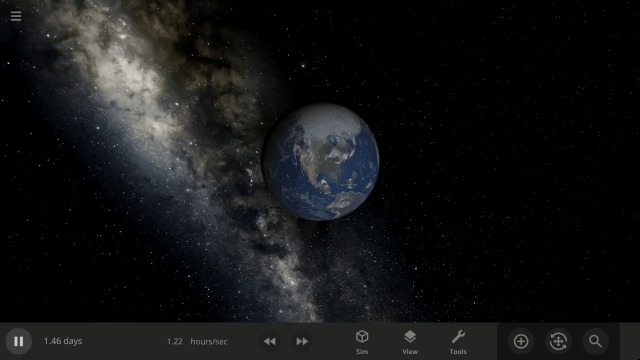
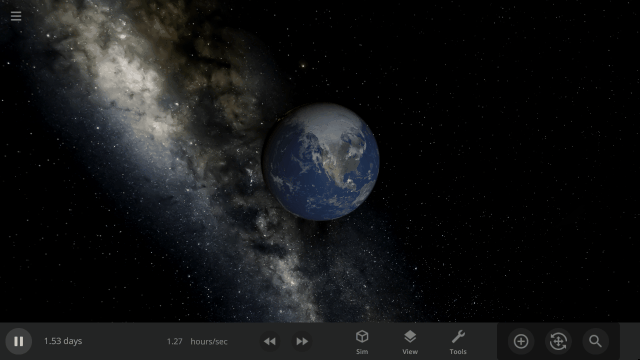
- The Solar System – Live View – Planets, Moons, Spacecraft simulation now has 7 additional spacecraft: Parker Space Probe, BepiColumbo, James Webb Space Telescope, Juno, New Horizons, Voyagers 1 & 2
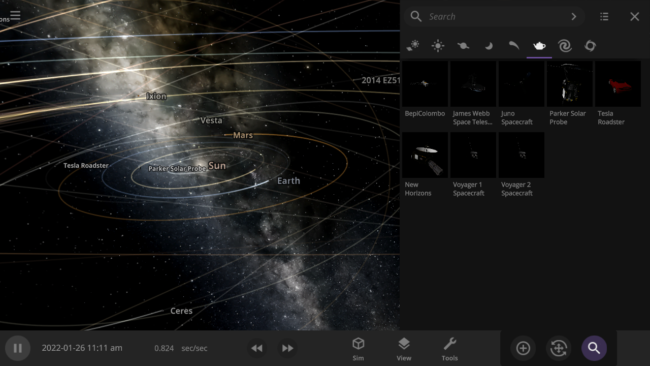
- Here’s a close-up of the James Webb Space Telescope in Universe Sandbox
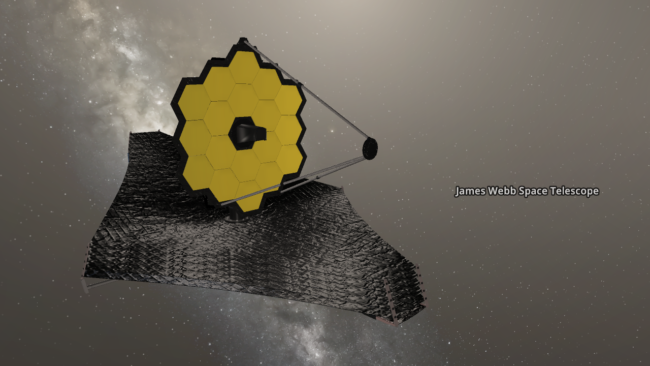
- We’ve polished the look and feel of the Planetscaping and Laser tool cursor
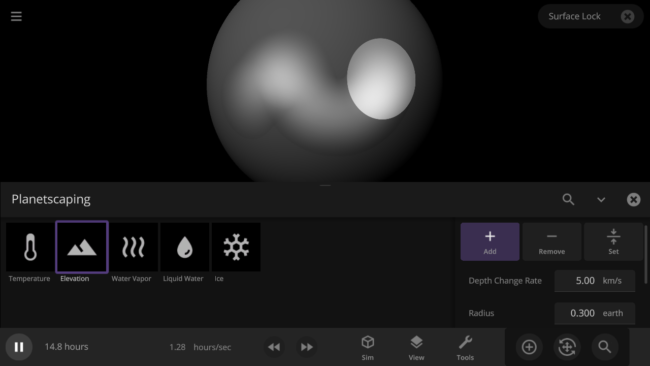
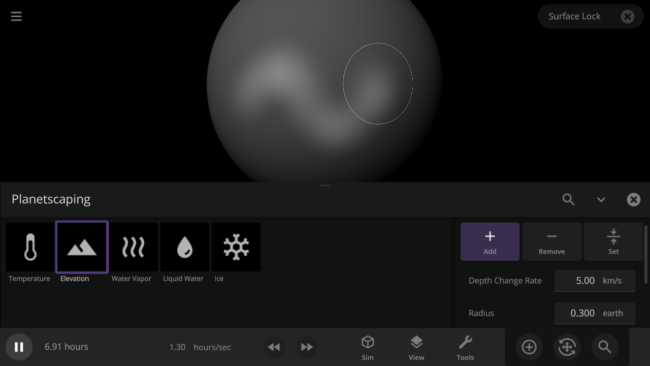
This update includes 3+ additions and 12+ fixes and improvements.
Check out the full list of What’s New in Update 29.1
Please report any issues on our Steam forum, on Discord, or in-game via Home > Send Feedback.

Planetscaping | Update 29
Dec 22nd

Run Steam to download Update 29, or buy Universe Sandbox via our website or the Steam Store.
Update 29
This update introduces Planetscaping, a powerful new way to design and shape planets to your whims. Surface Lock, which gives a clear, stationary, and illuminated view of the surface of a rotating object, has been enabled to better observe how an object’s surface is changing.
Planetscaping (Surface Editing)
Create continents, freeze oceans, flood planets, and more with Planetscaping. Watch the realistic consequences of your actions unfold as you alter the face of planets. Learn more in our Planetscaping guide:
Guides > Tutorials > Planetscaping
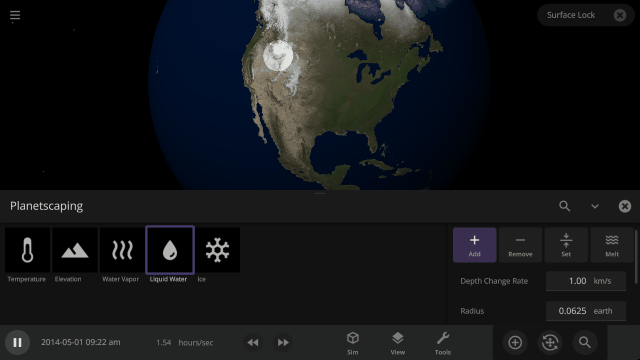
Surface Lock
We’ve made it easier to view how the surface of an object is changing by improving and enabling Surface Lock. This gives a clear, stationary, and illuminated view of the surface of a rotating object when you zoom close to it.
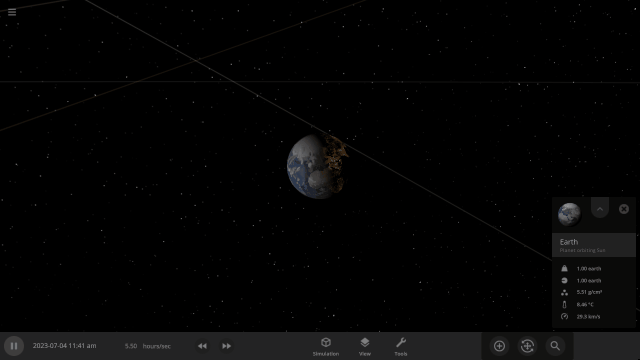
More Highlights
- We’ve added a Blank Planet, like a blank canvas for Planetscaping, to the Add panel
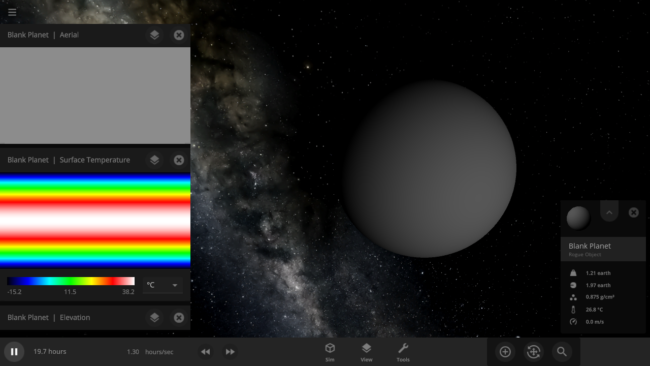
- Collisions have been further improved with updated frictional forces
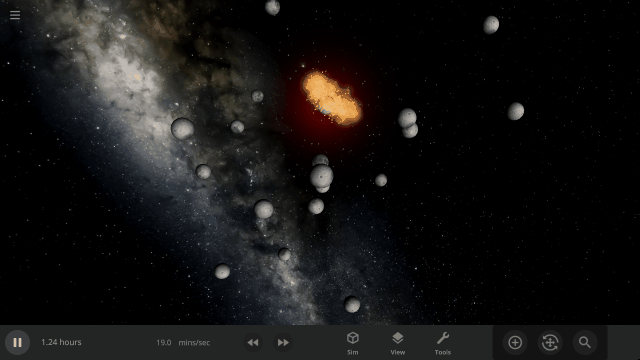
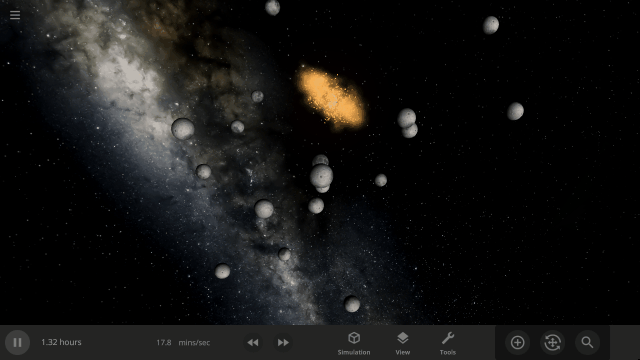
- We’ve exposed the Elevation Span, the distance between the lowest and the highest elevation point of an object, to better assist with Planetscaping
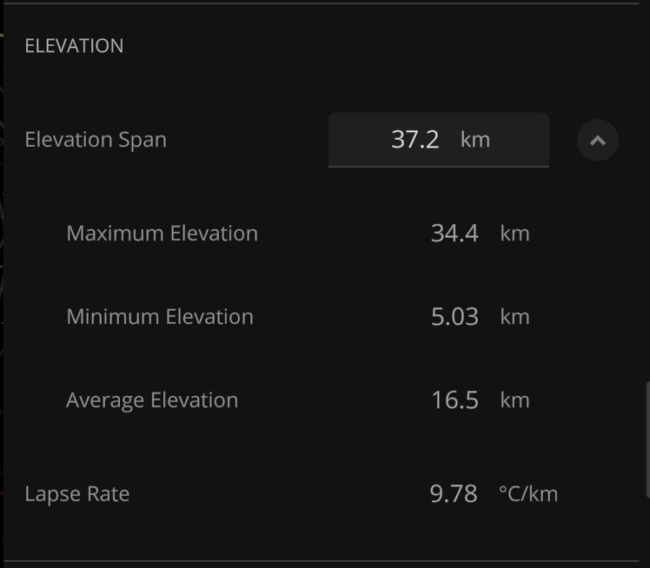
This update includes 5+ additions and 18+ fixes and improvements.
Check out the full list of What’s New in Update 29
Please report any issues on our Steam forum, on Discord, or in-game via Home > Send Feedback.

Starlite Starbrite | Update 28.2
Nov 23rd
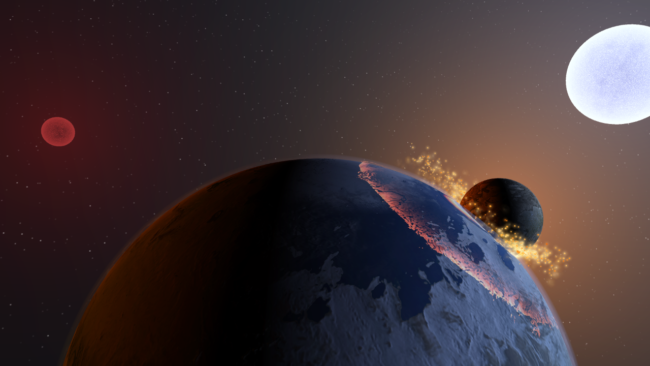
Run Steam to download Update 28.2, or buy Universe Sandbox via our website or the Steam Store.
Update 28.2
Stars have new Absolute and Apparent Magnitude properties, which measure their brightness from different distances. This minor update also includes improvements to black hole collisions, object trails, and bug fixes.
Stellar Magnitudes
Stars now have both Apparent and Absolute Magnitude properties, which are measures of the brightness of a star, under Properties > Temperature. Learn more in our new Stellar Magnitudes guide: Guides > Science > Stellar Magnitudes.
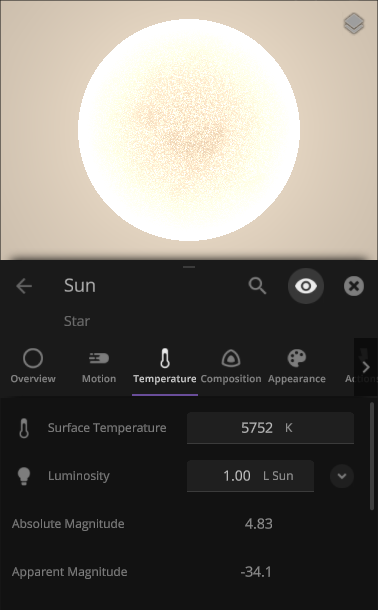
More Highlights
- Colliding black holes now compute the correct Schwarzschild radius
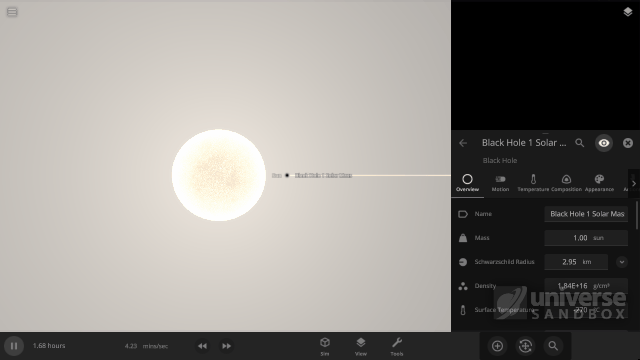
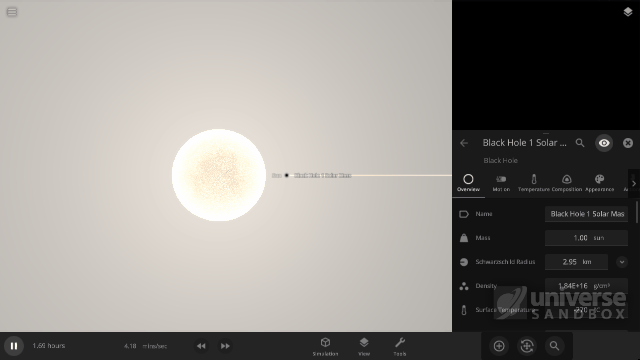
- Trails for objects are no longer broken and jagged when an object is set as the trail center
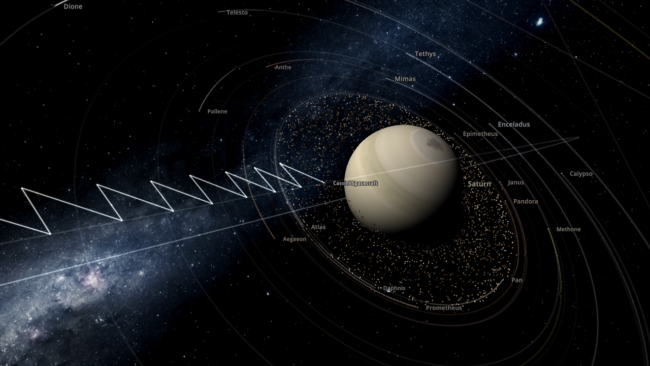
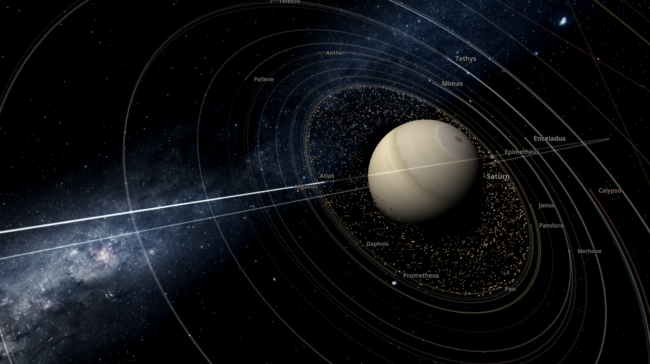
- Starlight color on nearby objects now updates in real-time
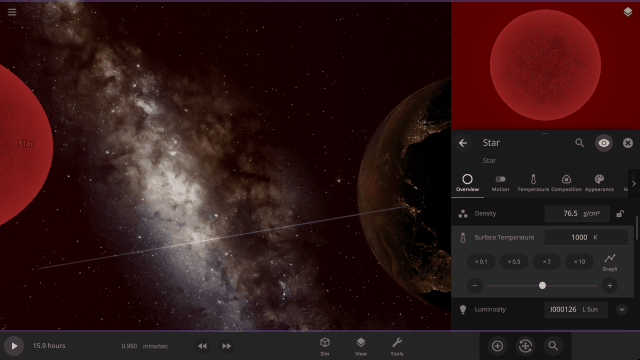
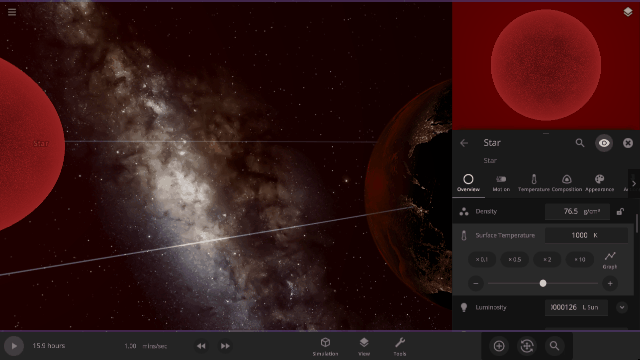
- Human scale objects are now simply heated by stars and supernovae to better reflect their temperature in space
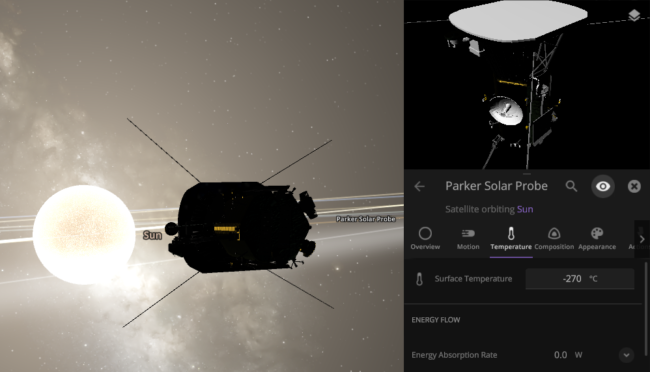
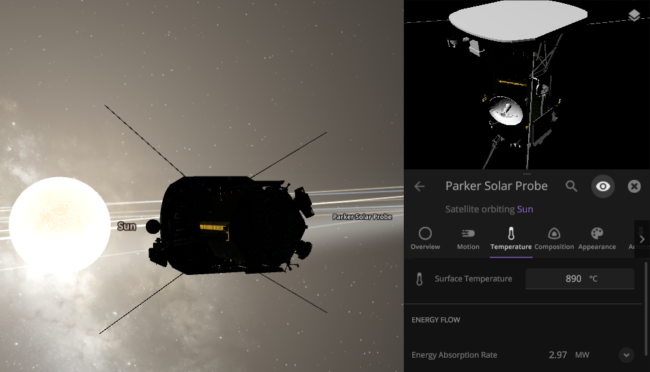
- Created a new guide about object oblateness and its effect on gravitational fields under: Guides > Science > Non-Spherical Gravitational Fields
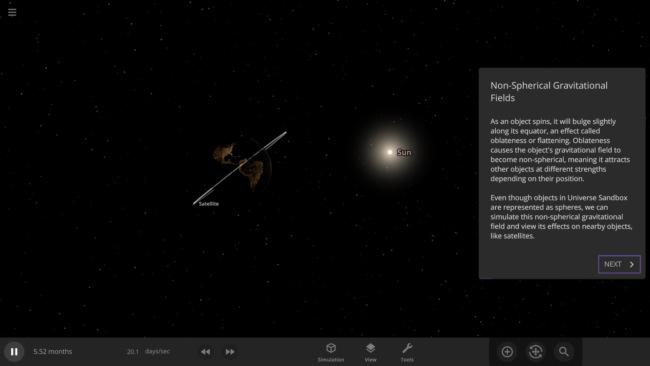
This update includes 3+ additions and 13+ fixes and improvements.
Check out the full list of What’s New in Update 28.2
Please report any issues on our Steam forum, on Discord, or in-game via Home > Send Feedback.

My Eyes, the Space Goggles Do Nothing | Update 28.1
Oct 28th
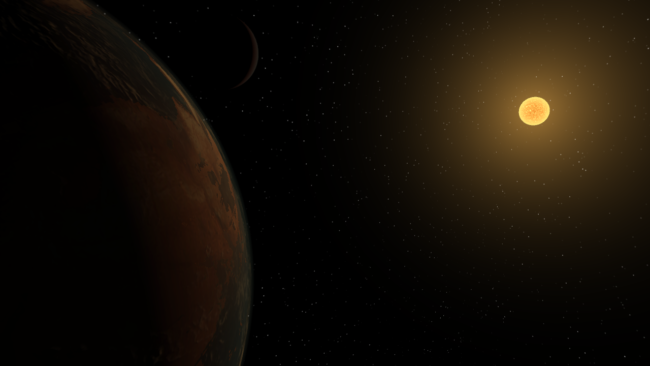
Run Steam to download Update 28.1, or buy Universe Sandbox via our website or the Steam Store.
Update 28.1
We’ve improved the “Realistic” Object Visibility setting to better reflect the sensitivity of the human eye to object brightness and colors. We also added a new “Enhanced” Object Visibility, improved collision detection, smoothed out habitable zones, added bug fixes, and more!
Realistic Object Visibility
The “Realistic” Object Visibility setting now shows objects fading in and out with adjusted colors tuned to what the human eye would see. Learn more in our guide, Limits of Human Eyes.
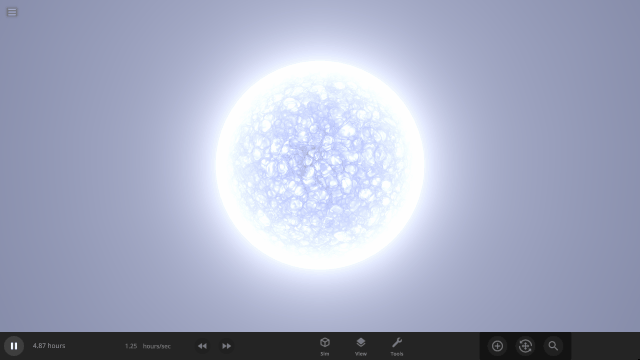
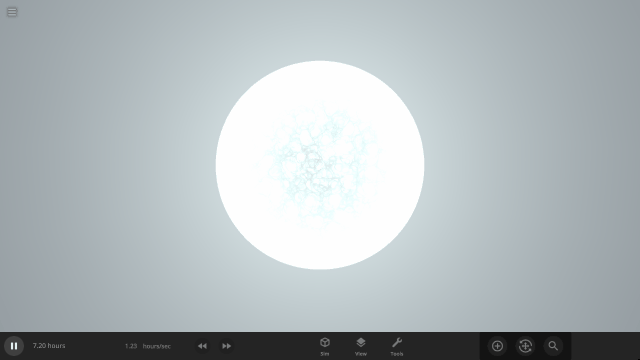
Smoother Habitable Zones
The habitable zone now smoothly changes size for stars of all luminosities, including very hot, bright stars like Rigel. Check it out under View > Habitable.
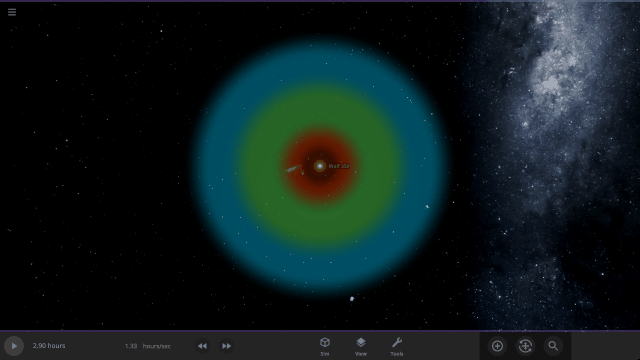
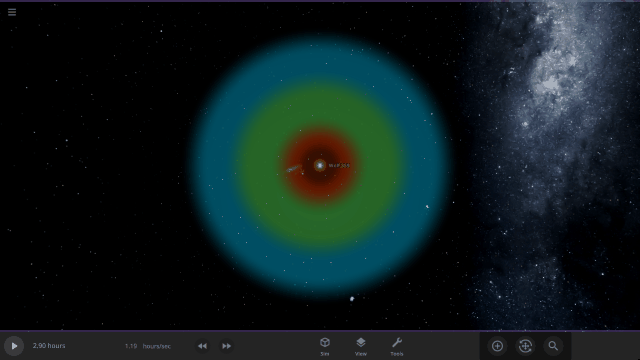
More Highlights
- “Enhanced” has been added as an Object Visibility option, which removes rim lighting from objects while keeping them always visible
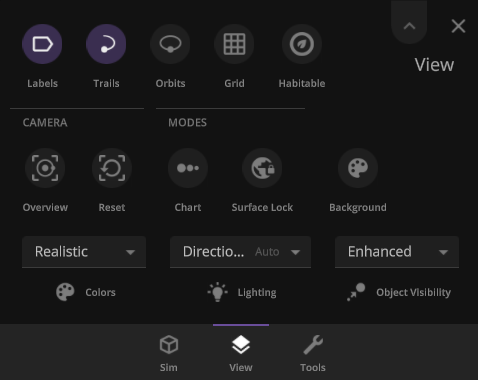
- Collision detection has been further improved as part of our continued work to make collisions even better
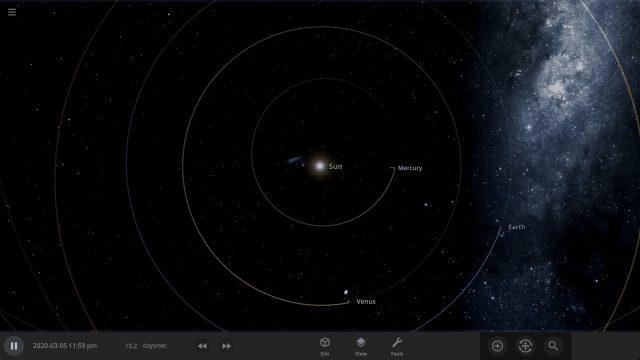
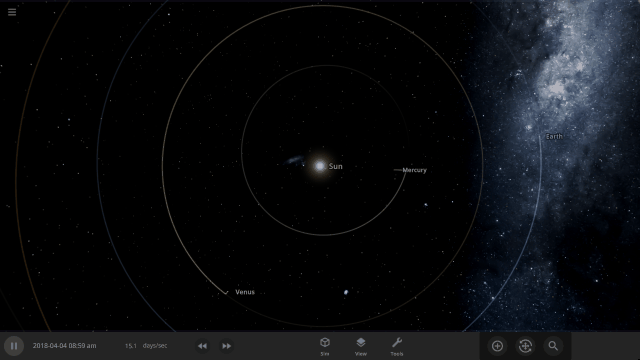
- We’ve added a satellite to our human-scale objects
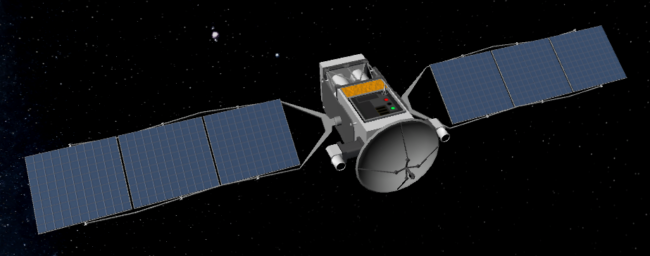
- Created simulation of ESA and JAXA’s BepiColombo spacecraft flyby of Mercury in October 2021: Open > Historical > BepiColombo Flyby of Mercury in 2021
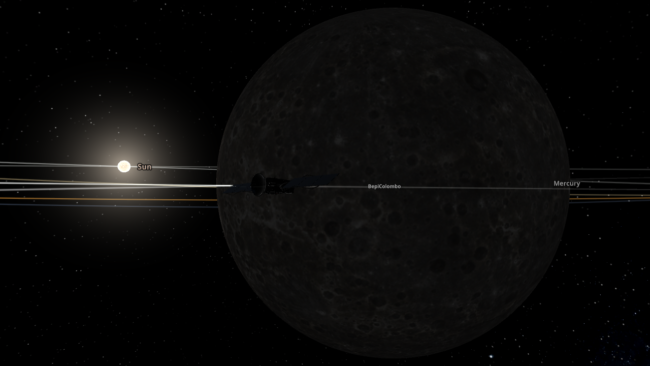
- Open, Guides, and Workshop panels can now be pinned open, allowing for much easier simulation browsing

- The View Settings panel has been reorganized for better clarity and usability
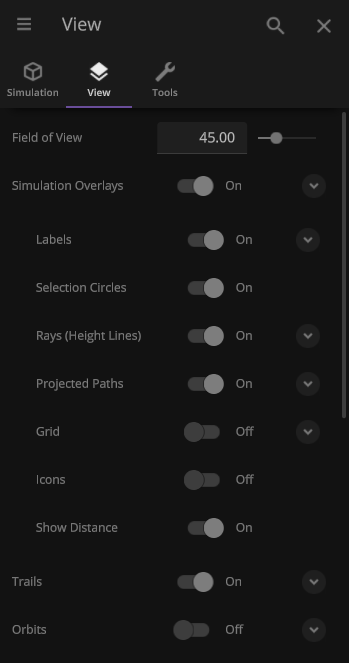
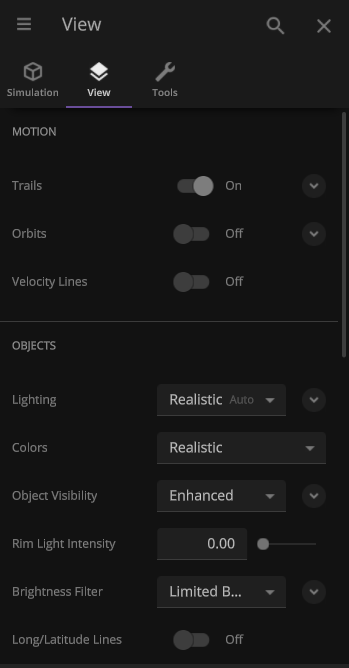
This update includes 6+ additions and 12+ fixes and improvements.
Check out the full list of What’s New in Update 28.1
Please report any issues on our Steam forum, on Discord, or in-game via Home > Send Feedback.

Codename: Fire Ring | Update 28
Sep 23rd
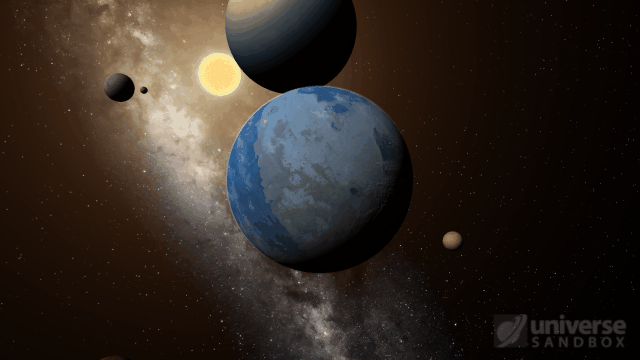
Run Steam to download Update 28, or buy Universe Sandbox via our website or the Steam Store.
Update 28
Fire Ring introduces a collision model that simulates an impact shockwave across the surface of an object, as part of our work to continuously improve collisions. In addition, there are improvements to object trails, additional object information, bug fixes, and more.
Shocking Collisions
Object heating from impacts now realistically moves over the impacted object as a shockwave. Fragments are ejected from the edge of the shockwave at more realistic angles. Learn more in our Collisions guides:
Guides > Tutorials > Planetary Collisions
Guides > Science > Collisions: Energy, Mass, and Speed
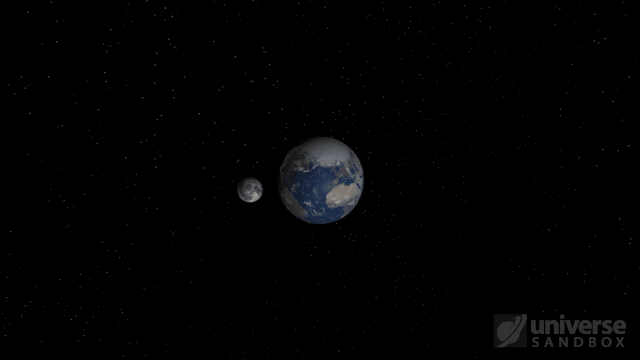
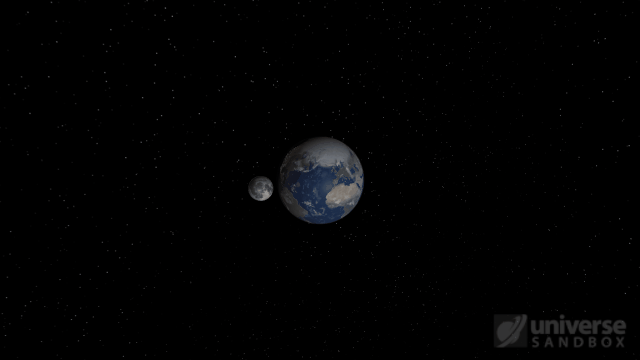
Impactor Heating
Both objects involved in a collision now experience collisional heating on their surfaces, instead of just the larger object.
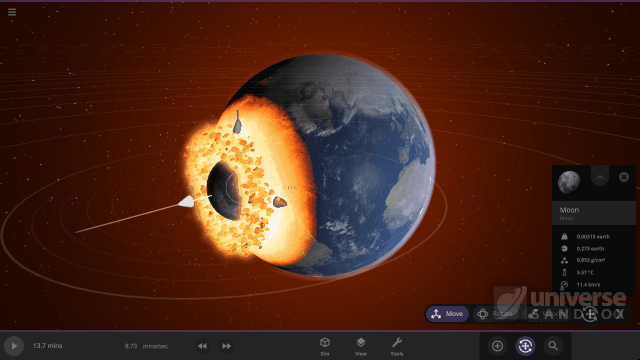
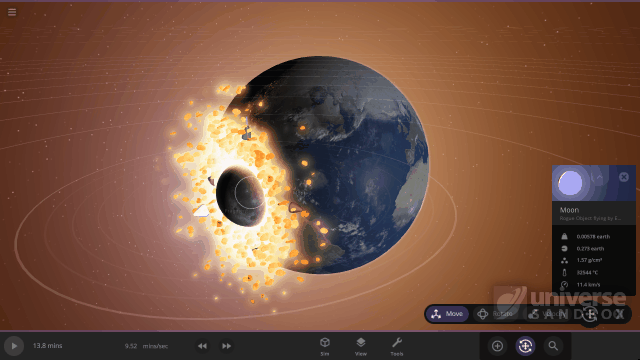
More Highlights
- Grazing collisions now look more realistic with shockwaves and surface dragging
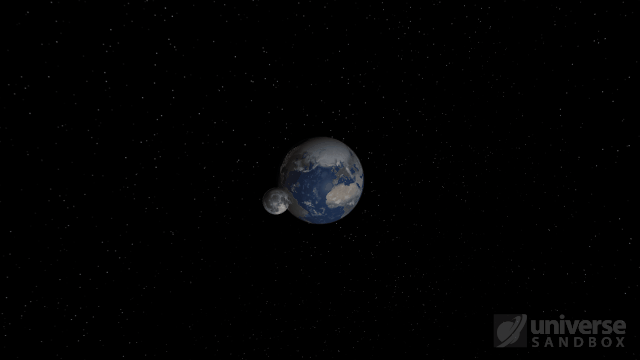
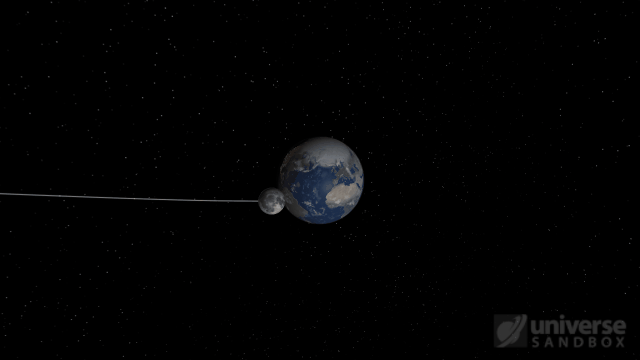
- Object trails are now projected back in time to show their full past trajectory

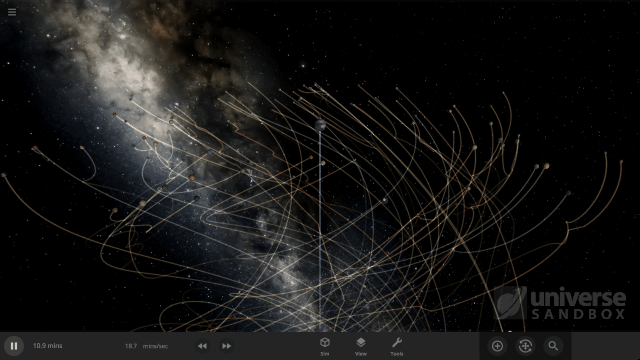
- Objects now have additional information (like, planet, moon, rogue object) in the property panel based on their relative motion around other objects
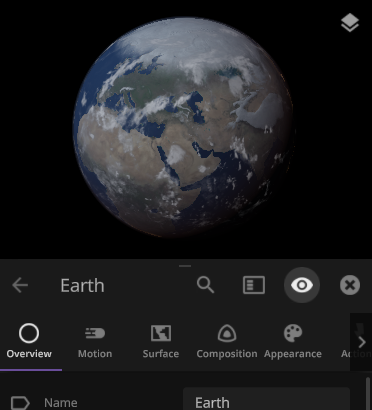
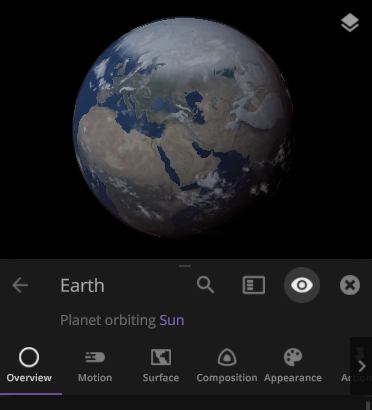
- As we work toward making our simulations more deterministic, seeds for randomized simulations are now easier to find, allowing you to recall previous random scenarios
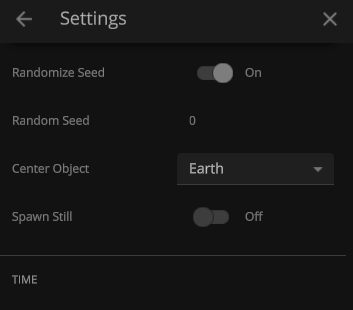
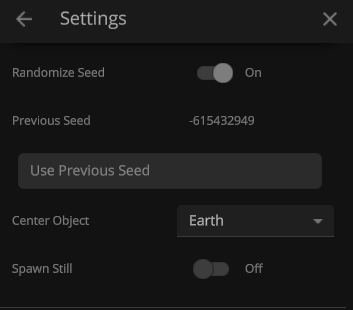
This update includes 6+ additions and 22+ fixes and improvements.
Check out the full list of What’s New in Update 28
Please report any issues on our Steam forum, on Discord, or in-game via Home > Send Feedback.

Atmospheric Adjustments | Update 27.2
Aug 2nd
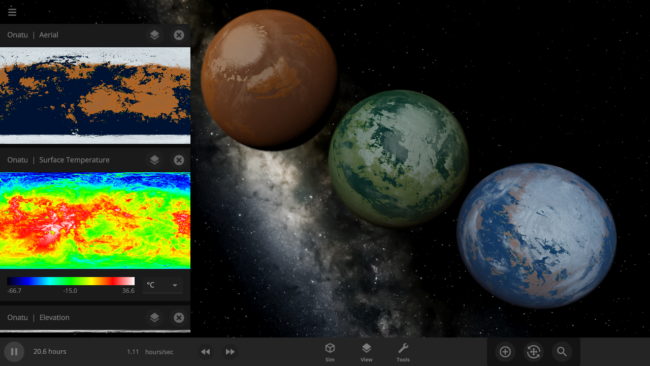
Run Steam to download Update 27.2, or buy Universe Sandbox via our website or the Steam Store.
Update 27.2
You can now change specific simulation interactions, like gravity and collisions, on a per-object basis! This minor update also includes simulated atmosphere opacity (a measure of how hard it is to see through the atmosphere), bug fixes, and more.
Individual Object Simulation Manipulation
The ability to turn off specific simulation interactions on a per-object basis has been added to all objects in Properties > Overview. We plan to add to this over time, and we hope you enjoy creating all kinds of crazy scenarios with these options as much as we do!
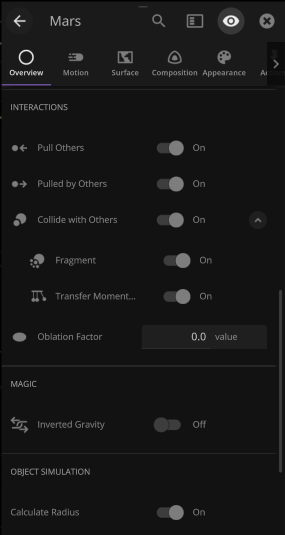
Opaque Atmospheres
Atmosphere Opacity is now simulated based on an object’s properties, like Radius and Atmosphere Mass. Learn more about this new feature in our Atmospheres guide under Guides > Science > Atmospheres.
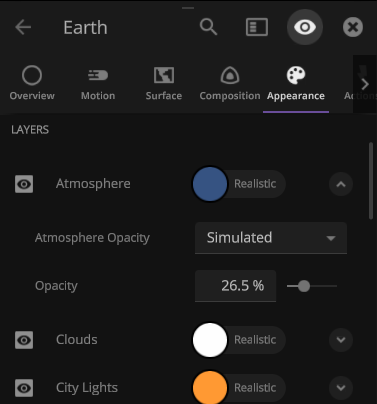
More Highlights
- Polar ice caps on random rocky planets are now informed by the water depth around the poles and are no longer circles
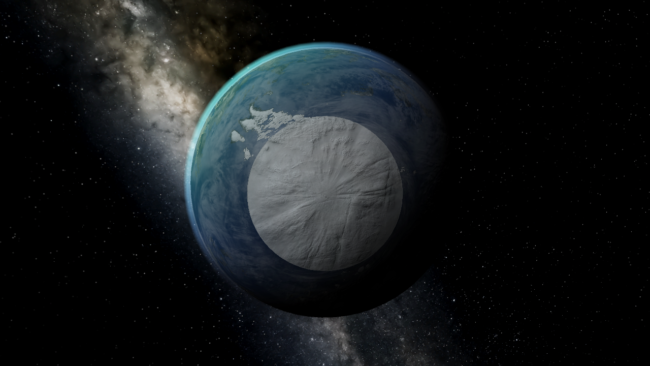
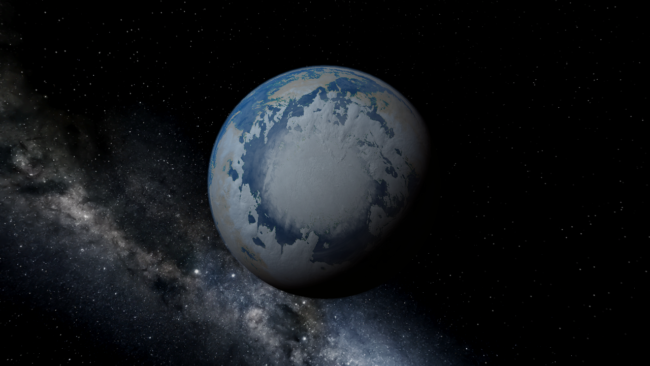
- Opening multiple surface data views no longer causes a noticeable reduction in performance
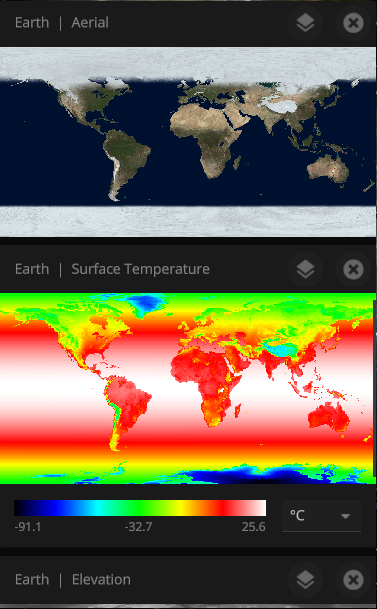
Check out the full list of What’s New in Update 27.2
Please report any issues on our Steam forum, on Discord, or in-game via Home > Send Feedback.
